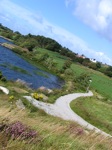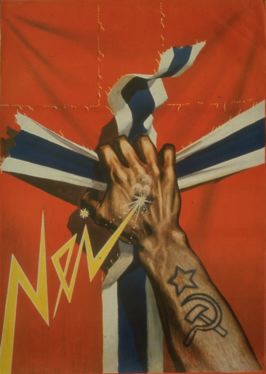I visited the Stavanger city archive this morning. After signing in I was given a tour when I said I was interested in finding out what they had. The main reading room is well lit and has a few rows of shelves with books on local issues, some of which can be found down the street at the library. In addition, it has a set of books with municipal government meeting minutes going back over a century, and bound volumes of city budget books etc. Although I didn’t request anything, they apparently have all sorts of other documents available for request but there was no computer database or catalog to search. They also have complete copies of all the local newspapers, some both in original and microfilm.
There was no photocopy machine and I was told merely to take pictures of non-copyrighted materials with a digital camera (such a huge contrast from Japanese archives, for example, as well as I’m sure many other places where they are horribly and unnecessarily strict about digital cameras).
While I looked through some of the materials looking for information on the aftermath of the war and especially the handling of traitors and collaborators, I was able to find lists of people who had been removed from their municipal government posts, and some information on the history of the police services in Stavanger during and after the war.
The greatest find of that morning, however, was a visit from the city’s archivist herself. She emerged from her office to show me around and ask what I was interested in. When I said I studied treason and traitors and was interested in looking at things related to the aftermath of the war in Stavanger, she said, “As a matter of fact, I did my thesis [hovedoppgave] on the [fascist] Nasjonal Samling party in Stavanger from 1933-37.” She then produced a copy of her dissertation. This is the political party of Quisling and its members, without exception were convicted of treason after the war, mostly without any trial or chance to defend themselves. While she is working on their early prewar development, when they were a completely legal and marginal party, it is great to have my own city archivist working on a topic so close. She recommended some other books, most of which I already had checked out from Stavanger’s library.
She also told me about a friend of hers who wrote hers on some kind of non-governmental organizations who worked with convicted traitors in the aftermath of the war! What a find (given my interests)! She found a copy, which I think was her own, and offered to let me borrow it. This is definitely on my reading list for the next few days…


